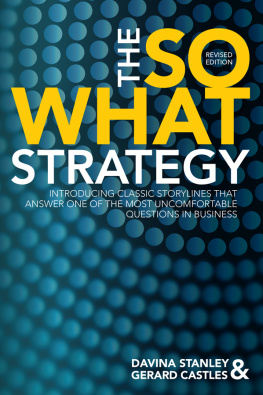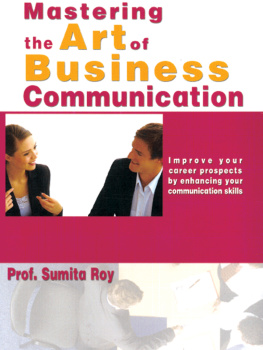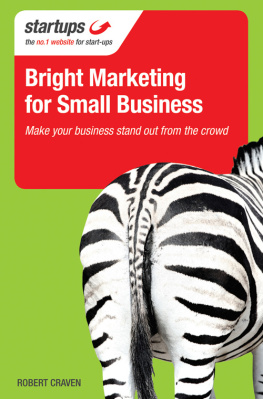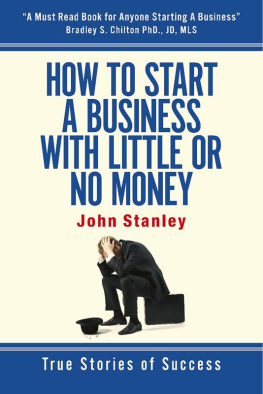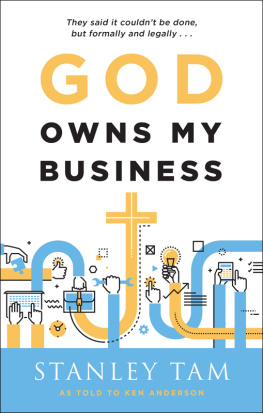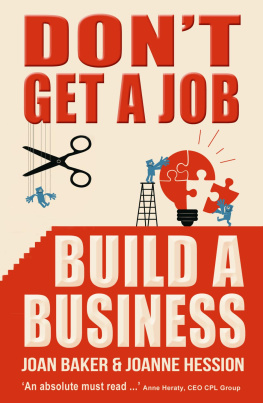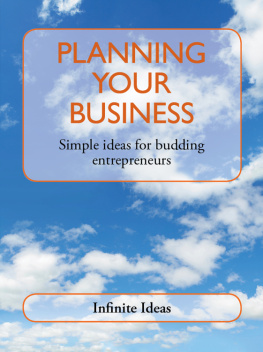I wanted to personally email you to let you know that in my 25+ years of education around the critical topic of mastering successful pitches and presentations, the strategies in your book have already helped me to completely change my approach to a board presentation tomorrow evening and will no doubt do the same for LCW.
Jeromine Alpe, CEO, Lets Connect Women, Sydney Australia
This could be the best investment that you make this year to improve yourself: my former McKinsey colleagues Davina Stanley and Gerard Castles have just published a guide to helping people get traction behind their ideas. Its about ensuring that youve been understood so that you can engage people to get things done. Highly recommended.
Robert Lakin, Co-founder, Analytika Research, Tel Aviv
When I build a new team, these foundations of clear thinking and powerful communication are always among the first practices I introduce. The ideas are seductively simple in concept, but wickedly potent in application. They make anyone in business more effective, regardless of profession or seniority. Stanley and Castles nail it. This is simply the single best guide to the fundamentals of clarity and persuasion in any type of business communication.
Houston Spencer, former head of corporate communications for Rio Tinto, London UK
This book is a wonderful guide for anyone who wants to master top-down, message-driven communication, including an elevator pitch. The book practises what it preaches. It is focused on a few key areas communicating the So what?, and it provides enough explanation and examples for you to master it, but not so much that you have to wade through repetitive pages.
Teresa Woodland, leadership expert and communication coach, Pittsburgh USA
I read your book and enjoyed it good insights and practical applications. It is short enough to have a quick read through the main points and message, and then go back later to focus in on the application. I do a lot of presentations that I have always thought of as Why? [we invest the way we do] and How [we are investing now] (portfolio/market update).
In the context of storylining I think these could be tightened into The Pitch (which is really why use my firm ) and Traffic Light for updates (whats going on in the portfolio). The exercise of really thinking about this can only be beneficial so I will try an overhaul for next big event and see.
Douglas Isles, Financial Services, Sydney Australia
By way of background, I have long history in the consulting space and believe that effective communications separates leaders from the pack. And its something that one can continually work on to improve. Over the years Ive read a number of books on communications such as books on writing, storyboards, logic, presentation construction, visual design, and verbal delivery. Ive recently read The So What Strategy , a book on business communications, and wanted to share my thoughts on the book.
The So What Strategy is an excellent book and provides readers with essential tools for more effective business comsmunications related to writing, storyboards, logic, and presentation construction. Here are three reasons why it will be one of the top books for me to recommend to other consultants and business professionals:
First, the book establishes a solid foundation from a structural point of view. The authors cover fundamentals from understanding ones audience, the drivers for particular communications (for example, context, triggers, and key question), bottom line messaging, and logical storyboards for key patterns that come up in business situations. The book also goes further to suggest concrete steps as to how one might incorporate storyboarding and other elements into both ones own work and the internal processes of an organization.
Second, the book is differentiated from other books, especially as it relates to addressing classic patterns one encounters in business. One classic book in consulting relative to communications is The Pyramid Principle by Barbara Minto (also ex-McKinsey). While Minto does a great job at explaining logical concepts that are pervasive in management consulting approaches such as mutually exclusive, collectively exhaustive (MECE) frameworks and tying these concepts to writing, Stanley and Castles dovetail with the same concepts and also cover seven classical storyline patterns that are suitable for business. These storyline patterns include things such as communicating action plans, suggesting recommendations, pitching ideas, providing updates, and several others.
Finally, The So What Strategy comes in a modern package. While I feel the other two points I mention above are strengths, books package is one is the biggest selling points for me. First, for the time-pressed professional, the book is a very rich but quick read. I got through the book in about two hours, which is surprising given how rich the book is in terms of content and substance. And yet the book can easily fit into the messenger bag of a road warrior consultant. Second, the book has concrete examples of emails, storyboards, and presentations; this helps readers actually see where communications can be improved and how following the authors frameworks can help. Third, the book provides concrete tools (such as checklists) and is well-structured for being a quick handbook.
I highly recommend The So What Strategy . Davina Stanley and Gerard Castles have done a remarkable job putting this book together.
Steve Shu, Management Consultant, Los Angeles, California (http://steveshu.com)
ACKNOWLEDGEMENTS
In writing this book we are all too aware of the shoulders upon which we stand. We both began our consulting careers as communication specialists at McKinsey & Company.
We learned from some of The Firms greatest communicators: Sara Roche and Joanne Wyss in the US, Mary Mills in Sydney, and Julie Pierce, Thom Shaw, Ruby Chen and Teresa Woodland in Greater China. Barbara Minto of The Pyramid Principle fame was also in the mix, as well as many other colleagues from Europe, Asia and the Americas with whom we shared late-night storylining conversations.
We continue to enjoy the push and pull of working with wonderful colleagues, some of whom trained at The Firm, some of whom bring a different perspective. Our current list of collaborators includes Angela Scaffidi, Louise Geoghegan, Josh Dowse, Jo Wigley, Natalie Hoy and Sally McMicking.
We also thank those family members, friends, clients and colleagues who took the time to read our early drafts and offer us some courageous feedback: Andrew Stanley, Bruce Trewhella, Christiane Gerblinger, Mary Morel, Nick Murray and Wayne Lewis.
Last but not least, we thank our clients, who have opened our eyes as to how storylines can be used in practice, inside and outside consulting environments, in almost all areas of business and government.
First published in 2017 by Clarity Know How Pty Ltd
Revised edition first published in 2019 by Clarity Know How Pty Ltd
Davina Stanley and Gerard Castles 2019
The moral rights of the authors have been asserted
All rights reserved. Except as permitted under the Australian Copyright Act 1968 (for example, a fair dealing for the purposes of study, research, criticism or review), no part of this book may be reproduced, stored in a retrieval system, communicated or transmitted in any form or by any means without prior written permission.
All inquiries should be made to the authors.
A catalogue entry for this book is available from the National Library of Australia.

